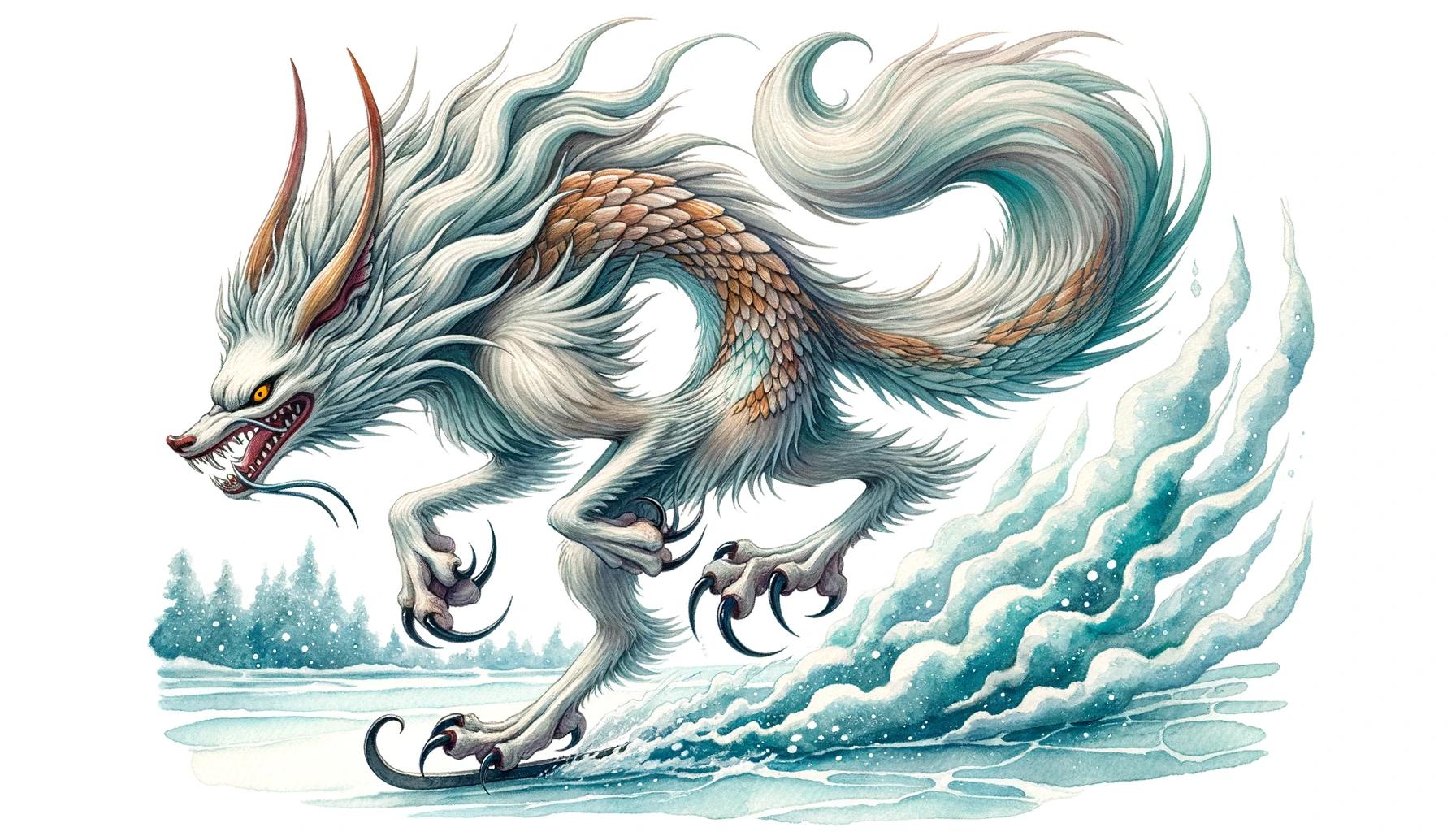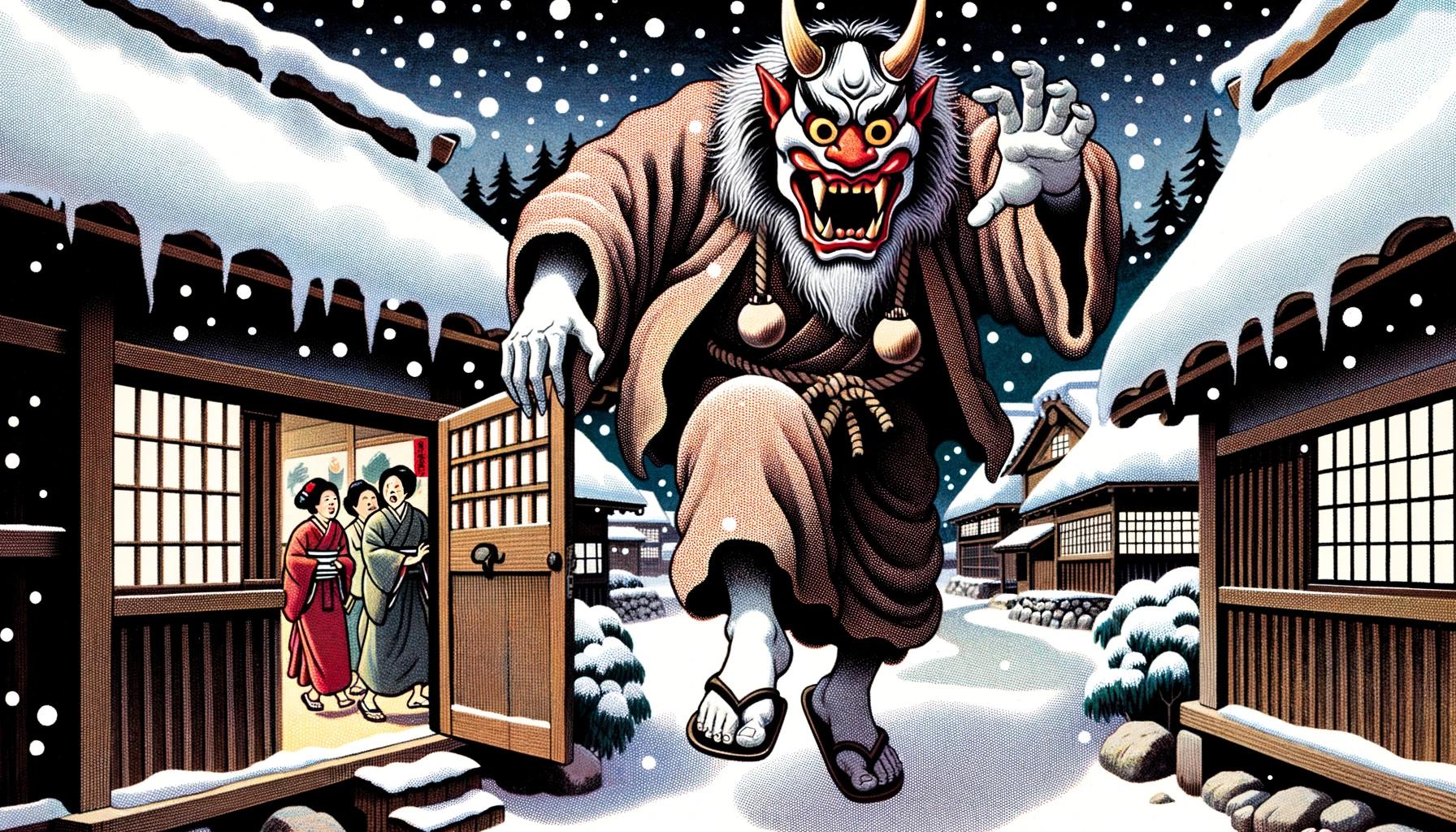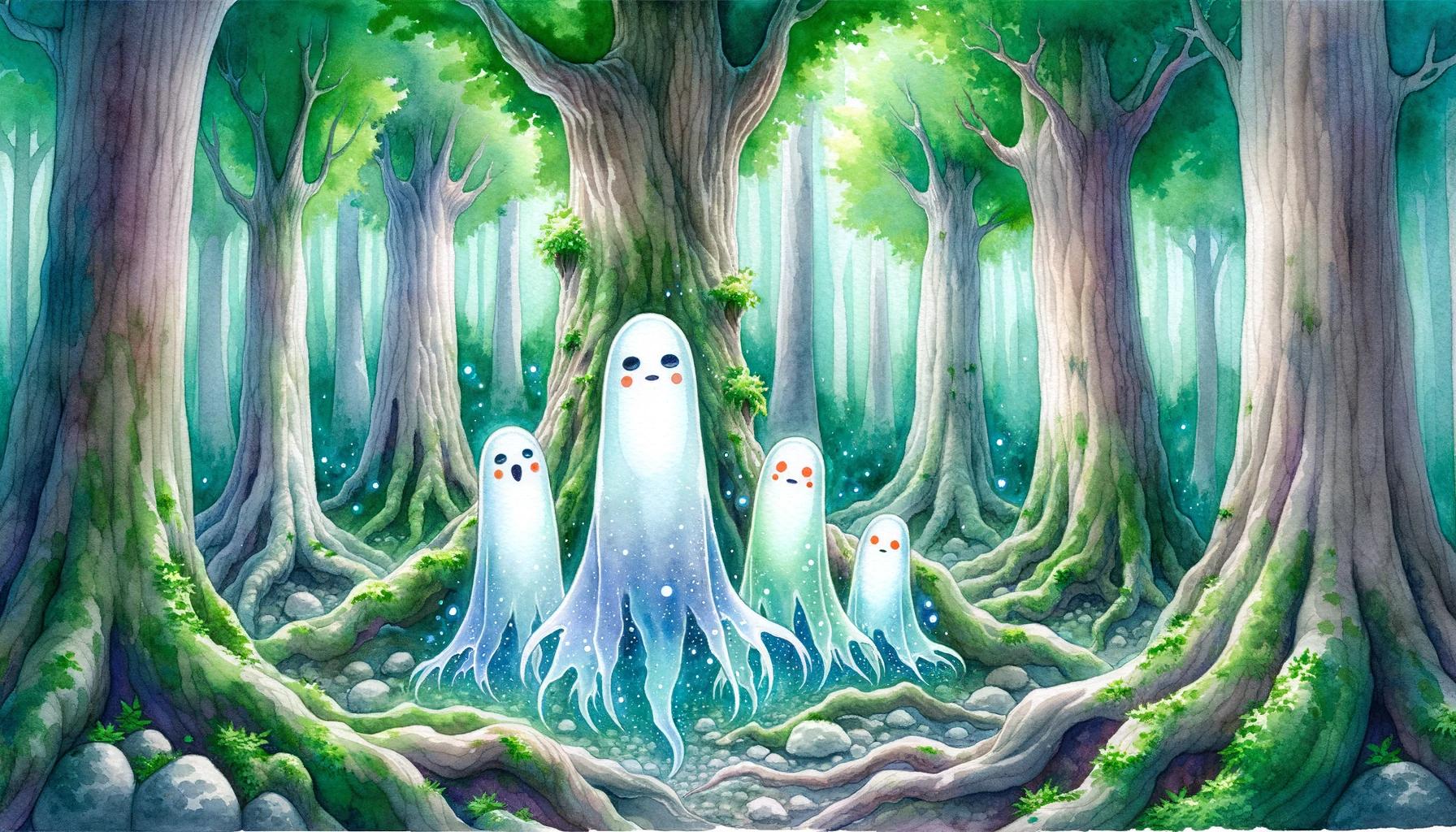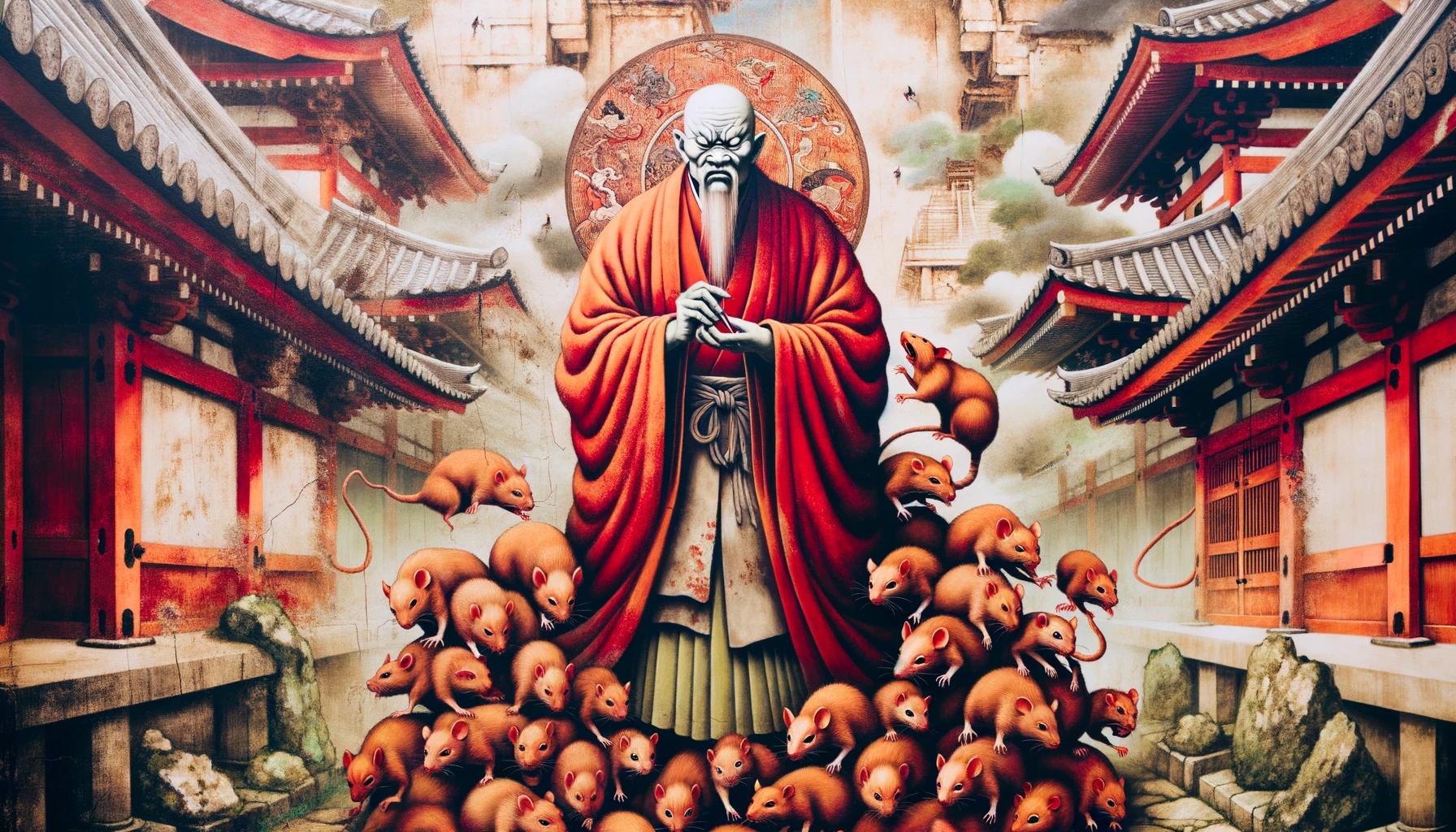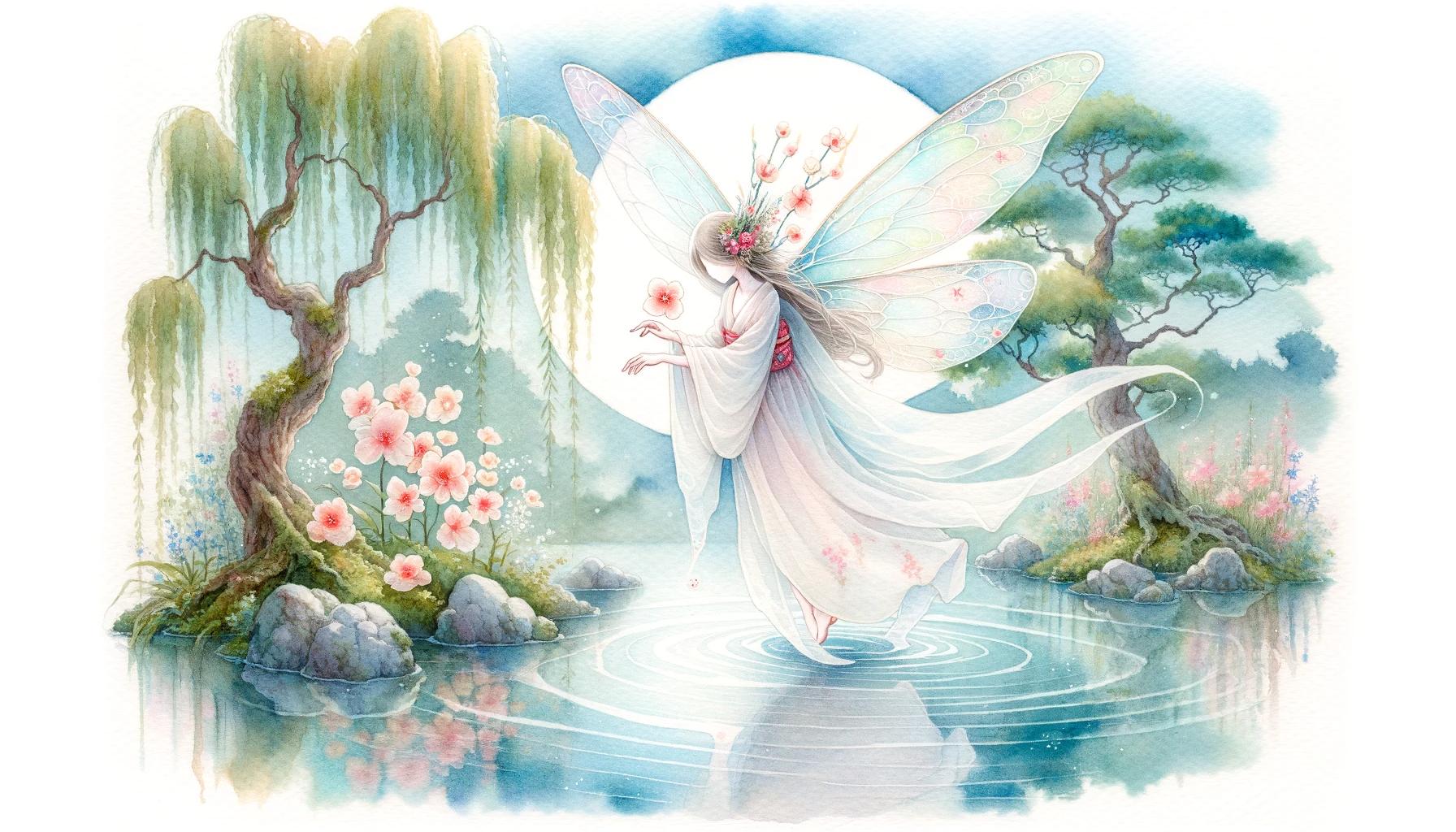Kamaitachi Yokai: Mysterious Creatures of Japanese Folklore
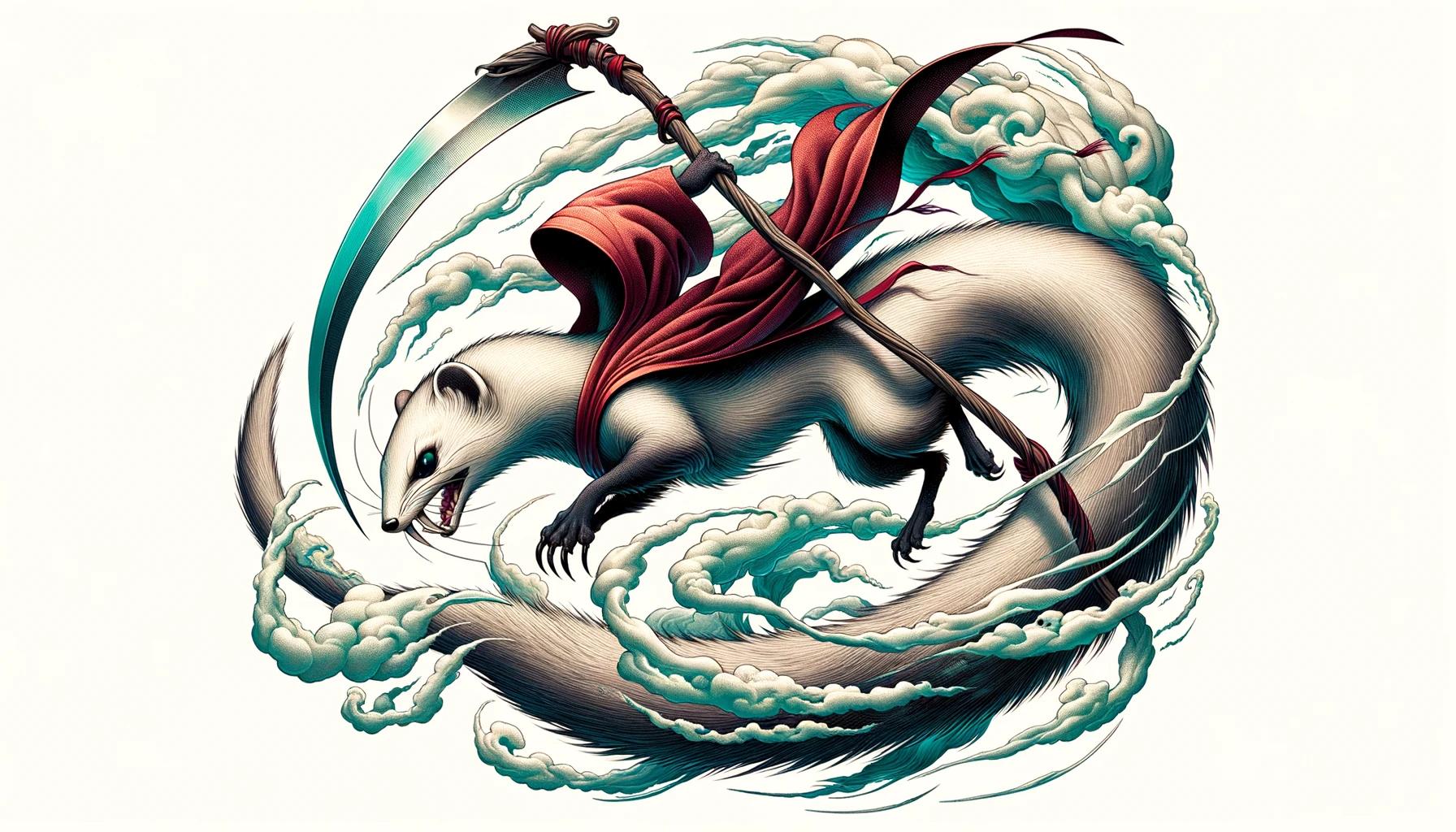
Kamaitachi Yokai are mysterious creatures from Japanese folklore believed to inhabit the Japanese Alps and regions where weasels reside. Known for their unique appearance and mischievous behavior, these creatures are said to move with incredible speed, making them invisible to the human eye.
They are known to travel in groups of three, attacking their victims with precise strikes that leave behind minimal bloodshed. Throughout different regions of Japan, legends and beliefs about Kamaitachi vary, attributing different powers and roles to these enigmatic creatures.
In this article, we will explore the origins, legends, and cultural significance of the Kamaitachi Yokai, as well as their depictions in art, media, and other folklore entities in Japanese culture.
Kamaitachi Yokai: Exploring the Mysterious Creatures of Japanese Folklore
The Kamaitachi Yokai are intriguing beings deeply rooted in Japanese folklore. In this section, we delve into the origins and legends surrounding these enigmatic creatures, while also examining their physical characteristics and mischievous behavior.
Furthermore, we explore the unique abilities and formidable attacks that distinguish the Kamaitachi from other supernatural entities.
Origins and Legends of the Kamaitachi
The origins of the Kamaitachi remain steeped in mystery and folklore. Legends recount various tales that attempt to explain their existence. One such story suggests a connection to the ancient fighting technique known as ‘kamae tachi,’ which may have inspired their name.
Other tales revolve around accidental creation or vengeful intent, including a woman using the Kamaitachi to seek retribution.
Physical Characteristics and Behavior of Kamaitachi Yokai
The Kamaitachi possess distinct physical attributes that set them apart from other creatures. Their appearances often mirror those of weasels, with spiky, hedgehog-like fur. They move at astonishing speeds, rendering them invisible to the human eye.
These mischievous yokai travel in groups of three, executing coordinated attacks with precision and breathtaking agility.
The Kamaitachi’s Unique Abilities and Attacks
What makes the Kamaitachi particularly fascinating are their exceptional abilities and relentless attacks. Operating in synchronized teams, each member performs a designated role. The first Kamaitachi targets its victims’ legs, causing them to stumble and fall.
The second inflicts numerous deep, razor-sharp cuts using its sickle-like claws. Finally, the third Kamaitachi swiftly applies a magical ointment that miraculously heals most injuries, leaving behind only minor scratches and discomfort.
Their attacks are executed with such precision that victims often fail to perceive the moment of assault, attributing their injuries to mere accidents. The Kamaitachi’s unique prowess lies in their capacity to sever chunks of flesh without a single droplet of bloodshed.
Their primary goal, it seems, is not to cause fatalities, but rather to frighten and toy with their victims.
- Legends and tales surrounding the Kamaitachi emphasize their incredible speed and perplexing ability to traverse vast distances with ease.
- They are often associated with whirlwinds, appearing to glide atop these gusts and strike their prey before disappearing into thin air.
- The Kamaitachi’s supernatural skills extend to their harmonious teamwork, illustrating their intelligence and cunning nature.
With a more profound understanding of Kamaitachi origins, characteristics, and their astonishing abilities, we can now explore the diverse regional beliefs and captivating stories that further enhance their mystique.
Different Regional Beliefs and Stories about Kamaitachi
The Kamaitachi Yokai have captivated the imaginations of people across different regions in Japan, leading to the development of diverse beliefs and stories surrounding these enigmatic creatures. From the mountainous regions of Yamanashi, Nagano, and Niigata to the Kōshin’etsu region and beyond, let’s explore the intriguing regional variations in kamaitachi legends and their cultural significance.
Kamaitachi Legends in Yamanashi, Nagano, and Niigata Regions
In the picturesque areas of Yamanashi, Nagano, and Niigata, a particularly troublesome type of kamaitachi is said to roam. Residents warn their grandchildren to be cautious of these mischievous creatures who have mastered riding whirlwinds in the cold mountainous region.
With claws as strong as steel and sharp as razors, they move at lightning speed, making them virtually invisible to the human eye. Their fur, spiky like hedgehogs, is accompanied by dog-like barks.
In carefully coordinated attacks, the first kamaitachi strikes at the victim’s legs, bringing them down. The second inflicts thousands of terrible cuts using its scythe-like claws. Finally, the third kamaitachi applies a magical ointment that instantly heals most wounds, leaving behind only some pain and scratches.
Their precision is said to be so astonishing that they can slice chunks of flesh without shedding a drop of blood.
Kamaitachi in Kōshin’etsu and Other Regions of Japan
The region of Kōshin’etsu holds its own unique beliefs about kamaitachi encounters. Legends describe these creatures appearing on whirlwinds of dust and cutting people with their razor-sharp claws, leaving behind sharp yet painless wounds.
The name “kamaitachi” derives from the words “itachi,” meaning weasel, and “kama,” meaning sickle. While initially believed to have corrupted from the term “kamae tachi” (sword stance), it has now firmly established itself as the yokai we know today.
Similarly, other regions throughout Japan have their own interpretations of kamaitachi. For instance, in Hida region, they are seen as a trio of malevolent deities, striking, cutting, and healing wounds. In Yoshio District, Nara Prefecture, it is believed that when one is bitten by an invisible kamaitachi, they will fall and suffer a wide opening in their flesh, without any bleeding.
Various Names for Kamaitachi-Like Creatures in Different Parts of Japan
Across different regions of Japan, similar creatures to kamaitachi are known by various names. In the western parts of Japan, they are referred to as “kazakama” and are said to cut people’s skin, initially causing no pain but resulting in delayed pain and bleeding.
These regional variations in nomenclature reflect the diverse folklore and cultural beliefs surrounding these yokai. Such names highlight the distinct characteristics and behaviors attributed to kamaitachi-like creatures across Japan, with each region bringing its own flavor to the stories and legends.
Cultural Significance and Superstitions Associated with Kamaitachi
As one of the most captivating creatures in Japanese folklore, the Kamaitachi Yokai holds significant cultural importance and has become deeply ingrained in Japanese traditions, beliefs, and popular culture. Let’s explore the different aspects that make Kamaitachi a legendary figure.
Kamaitachi in Japanese Folklore and Popular Culture
Kamaitachi has gained widespread recognition and fascination through its representation in Japanese folklore and popular culture. It has appeared in various traditional stories, ancient artwork, literature, and contemporary media. Many folktales depict the Kamaitachi as mischievous tricksters who enjoy playing pranks on unsuspecting individuals.
Its elusive nature, lightning-fast attacks, and ability to move with the wind have made it a favorite subject in folktales and urban legends.
Furthermore, Kamaitachi has become a prominent figure in Japanese popular culture, featuring in modern literature, manga, anime, and films.
Its distinct characteristics and unique abilities have made it an intriguing and visually compelling creature, captivating the imagination of people both in Japan and around the world.
Kamaitachi’s Role in Traditional Beliefs and Customs
Deep-rooted superstitions and beliefs surround the Kamaitachi, contributing to its significance in Japanese culture.
In traditional beliefs, encounters with Kamaitachi were often considered signs of upcoming changes or warnings. Some believed that encountering a Kamaitachi blowing in the wind indicated upcoming storms or natural disasters.
Additionally, Kamaitachi became associated with agricultural practices and seasonal transitions. Farmers would observe and interpret the presence of Kamaitachi as an indication of impending weather changes or the arrival of a new season, guiding their farming activities accordingly.
The creature became intertwined with agricultural calendars and local customs, playing a role in marking significant time periods for farming communities.
Impact of Kamaitachi on Local Communities and Folklore Gatherings
Kamaitachi plays a significant role in bringing communities together through folklore gatherings, storytelling sessions, and festivals. These events offer a platform for sharing Kamaitachi tales, legends, and personal experiences, fostering a sense of community and preserving cultural heritage.
Local communities often organize folklore festivals dedicated to the Kamaitachi Yokai. These festivities include performances, parades, and costumes inspired by the legendary creature. Such gatherings not only entertain and educate people about Kamaitachi but also serve as a means of passing down cultural traditions from one generation to the next.
These folklore gatherings create opportunities for individuals to connect with their cultural roots, appreciate local legends, and strengthen community ties. The impact of Kamaitachi on local communities showcases the enduring power of folklore and the role it plays in preserving cultural identity.
Kamaitachi Yokai in Art, Media, and Literature
Kamaitachi yokai have made their way into various forms of artistic expression, leaving a lasting impact on traditional Japanese art, modern literature and manga, as well as the film and entertainment industry.
Explore the diverse representations and depictions of these enigmatic creatures in the following areas:
Depictions of Kamaitachi in Traditional Japanese Art
The unique appearance and folklore surrounding kamaitachi have captured the imagination of traditional Japanese artists throughout history. In paintings, woodblock prints, and other art forms, kamaitachi are often portrayed as mischievous entities, depicted with their distinct sickle-like claws and fierce expressions.
These artworks not only showcase the physical characteristics of the yokai but also serve as a window into the cultural perceptions and beliefs surrounding them.
Kamaitachi’s Representation in Modern Literature and Manga
Influenced by an enduring fascination with yokai in Japanese culture, kamaitachi have become popular subjects in modern literature and manga.
These mediums have expanded on the legends and characteristics of kamaitachi, offering diverse interpretations and storytelling elements. Whether they appear as protagonists, antagonists, or supporting characters, kamaitachi continue to intrigue readers with their supernatural abilities and mysterious nature.
Kamaitachi Yokai in Film and Entertainment Industry
The allure of kamaitachi extends to the realm of film and entertainment, where they have been featured in various productions. Whether as part of traditional folklore adaptations or original stories, kamaitachi’s portrayal on the big screen has brought these creatures to life for audiences worldwide.
Their swift movements, supernatural powers, and mischievous behavior make for compelling and thrilling cinematic experiences.
Through their presence in traditional Japanese art, modern literature and manga, and the film and entertainment industry, kamaitachi yokai continue to captivate and inspire audiences.
Their portrayal in these mediums showcases the enduring intrigue and cultural significance of these mysterious creatures in the realms of artistic expression and popular culture.
Unveiling the Truth: Fact or Fiction about Kamaitachi Yokai
In the realm of Japanese folklore, the Kamaitachi Yokai captivates the imagination with its elusive nature and mysterious powers.
In this section, we delve into the fascinating realm of fact and fiction surrounding these enigmatic creatures. By analyzing various theories and explanations, debunking common misconceptions and myths, and exploring scientific and cultural interpretations, we aim to shed light on the truth behind the Kamaitachi phenomenon.
Analyzing Various Theories and Explanations about Kamaitachi
Over the years, scholars and researchers have put forward several intriguing theories regarding the origins and existence of the Kamaitachi. Some speculate that these creatures are nothing more than a playful fabrication rooted in a Japanese sword-fighting stance known as ‘kamae tachi.’
Others believe that accidental creation through abandoned grass-cutting scythes or a woman’s act of vengeance lies at the heart of these tales. We examine these theories and delve deeper into the possible truths behind the Kamaitachi legend.
Debunking Common Misconceptions and Myths Surrounding Kamaitachi
While legends and folklore contribute to the enchantment surrounding Kamaitachi, they are often accompanied by misconceptions and exaggerated myths. It is vital to separate fact from fiction and dispel any false notions associated with these mythical creatures.
By addressing common misconceptions such as their ability to cut without bloodshed or perceived calamities tied to encountering them, we aim to paint a clearer picture of the Kamaitachi’s true nature and capabilities.
Scientific and Cultural Interpretations of the Kamaitachi Phenomena
The Kamaitachi phenomena have not only captured the attention of folklore enthusiasts but have also intrigued scientists and cultural experts. Through scientific and cultural interpretations, we explore how the Kamaitachi legends and beliefs reflect the cultural fabric of Japan.
Furthermore, we delve into scientific perspectives, examining possible phenomenological or psychological explanations for reported encounters. This section combines the art of storytelling with scientific inquiry to offer a comprehensive understanding of the Kamaitachi Yokai.
Kamaitachi Encounters and Safety Tips
As the lore surrounding Kamaitachi yokai continues to captivate people’s imaginations, it’s important to understand the potential risks and take necessary precautions when encountering these mischievous creatures.
Here, we explore tales of Kamaitachi attacks and survivors’ experiences, as well as provide valuable safety tips to ensure your well-being in Kamaitachi-infested areas.
Tales of Kamaitachi Attacks and Survivors’ Experiences
Stories of Kamaitachi encounters have been passed down through generations, leaving victims with unique experiences.
Survivors often recount unexpected encounters with these swift yokai, falling victim to their mysterious attacks. While Kamaitachi strikes are known for being swift and precise, victims may find themselves knocked down or injured without realizing the source of their misfortune.
- Victims describe sudden trips and falls, attributing them to the first Kamaitachi’s attack targeting their legs.
- The second Kamaitachi, wielding its scythe-like claws, inflicts numerous cuts on the fallen victim, causing deep but painless wounds.
- Finally, the third Kamaitachi applies a magical balm that heals most of the wounds instantly, leaving victims with minimal visible damage.
Due to the speed and subtlety of their attacks, victims often remain unaware of the Kamaitachi’s presence, mistakenly perceiving their encounters as mere accidents with minor injuries.
Protective Measures and Folk Remedies against Kamaitachi
While it may be challenging to prevent Kamaitachi encounters entirely, there are several protective measures and folk remedies that people have employed to ward off these mischievous yokai:
- Carrying iron or steel objects, believed to repel Kamaitachi due to their “blades as sharp as steel” reputation.
- Wearing protective charms or amulets, thought to provide spiritual defense against Kamaitachi attacks.
- Reciting prayers or incantations found in local folklore, believed to create a protective barrier against these elusive creatures.
- Following the advice of local legends and avoiding specific areas or activities associated with Kamaitachi encounters.
Exploring Precautions and Safety Guidelines in Kamaitachi-Infested Areas
If you plan to explore regions rumored to be infested by Kamaitachi, it is essential to adhere to precautionary measures to ensure your safety:
- Be aware of your surroundings, especially in areas known for Kamaitachi activity, such as Yamanashi, Nagano, and Niigata.
- Travel in groups, as Kamaitachi are known to attack individuals rather than larger parties.
- Avoid walking in areas prone to sudden gusts or whirlwinds, as Kamaitachi are reputed to ride the wind.
- Stay on marked trails or paths to minimize the risk of accidental encounters.
- Consult local guides or residents for advice and information about Kamaitachi warning signs and avoidance strategies.
- Carry basic first aid supplies for minor injuries in case of an accidental encounter.
By being mindful of these safety tips and precautions, you can immerse yourself in the fascinating world of Kamaitachi folklore while keeping yourself protected from any potential harm.
Kamaitachi Yokai in Japanese Folklore: Similar Entities and Related Creatures
Kamaitachi yokai, with their unique traits and mischievous nature, are just one example of the fascinating yokai creatures found in Japanese folklore. Let’s explore some other notable yokai and compare them to the kamaitachi:
Exploring Other Yokai of Japanese Folklore
- Tengu: These legendary creatures, often depicted with long noses and wings, are known for their mischievous nature and association with mountains.
Unlike kamaitachi, they are capable of flight and possess supernatural powers.
- Oni: These fearsome and ogre-like beings are often depicted with horns and carry iron clubs. Unlike kamaitachi, they are typically portrayed as antagonistic creatures that cause trouble and malice.
- Kappa: Water-dwelling creatures resembling humanoid turtles.
Unlike kamaitachi, they are associated with rivers and ponds and are known for their love of cucumbers and mischievous behavior.
Comparisons between Kamaitachi and Other Creature Legends
While kamaitachi yokai share some similarities with other yokai creatures in Japanese folklore, their unique characteristics set them apart:
- Kamaitachi are renowned for their incredible speed, making them invisible to the human eye.
This distinguishes them from tengu, oni, and kappa, which are often more visible in their interactions with humans.
- Unlike oni, who are typically depicted as malevolent beings, kamaitachi’s primary aim appears to be scaring and playing tricks on their victims rather than causing serious harm.
- The kamaitachi’s distinctive ability to ride on whirlwinds and inflict precise, painless cuts sets them apart from other yokai creatures, which often rely on brute force or supernatural powers.
Unique Traits and Characteristics of Kamaitachi Yokai Compared to Similar Entities
When comparing kamaitachi yokai to other yokai creatures, it becomes evident that the kamaitachi possesses several unique traits and characteristics:
- Their association with sickles, their incredible speed, and their nocturnal nature distinguish them from creatures like tengu, oni, and kappa, each with their own distinct features.
- The kamaitachi’s preference for playing tricks and leaving minor cuts rather than causing serious harm sets them apart from more malevolent yokai creatures such as oni or restless spirits like yurei.
- The kamaitachi’s ability to move with the wind and their mastery of air-based attacks differentiate them from other yokai with distinctive powers or elements they control.
Thus, while kamaitachi yokai may share some similarities with other creatures in Japanese folklore, their unique traits, behavior, and associations make them a distinct and intriguing presence in the world of yokai.
.

